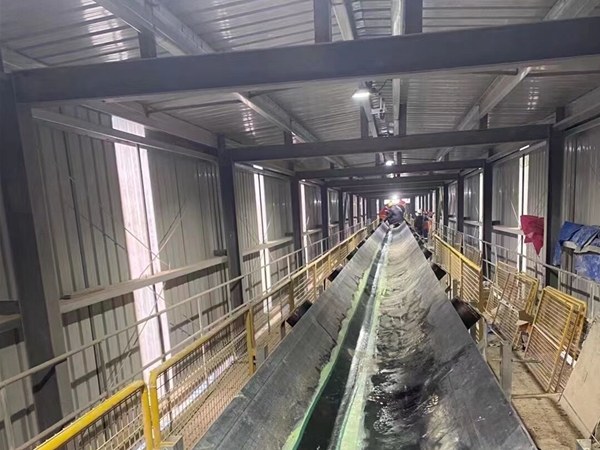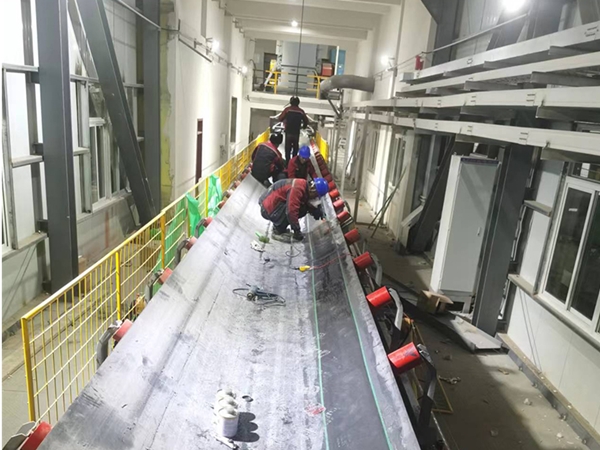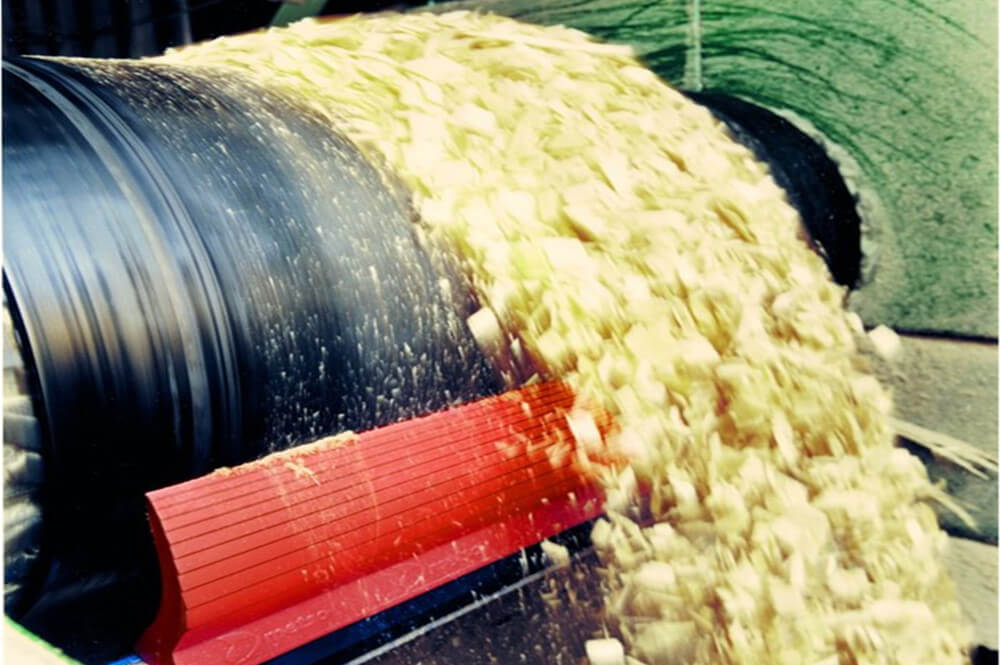Perhaps more than any other production and inventory management equipment has the potential to make workers safer and more productive. The conveyor can streamline the movement of finished products, components, packaging, and more when it is designed and operated correctly. However, conveyor belt failures may cause chaos in production workshops and warehouses; hinder work flow, accumulate materials, destroy valuable inventory, and may endanger workers.
All organizations strive to maintain the normal operation of production and create a safe working environment. Ensuring optimal conveyor belt efficiency goes a long way to achieving these goals. Stagnant conveyor belt systems are expensive and stressful, so it is vital to do anything to keep them moving.
1. Tips for belt selection before production
Conveyor efficiency can be improved by considering various factors even before your conveyor plant goes into operation.
1)Consider the load your conveyor belt will handle
The size, weight, dimensions, and other characteristics of the load your conveyor belt will transmit will help determine the conveyor belt materials, motors, drives, and hardware that are suitable for your application. Other aspects of the product, such as temperature and material, will also affect the choice. To begin, understand the difference between traditional conveyor belts and plastic modular conveyor belts. Overall, it is a good idea to review design options with belt experts considering all the different belt options.
2) Set your conveyor belt to pull type instead of push type
Pull type is more effective than push type. Your conveyor belt can lose up to 50-70% of its load capacity when pushed.
3) Consider the flow rate
How fast and precise you need materials to be transported or transported to the conveyor may require specific equipment. A fast conveyor belt is essential in industries such as distribution and airports. For fast-moving belts, you may need fasteners, endless splicing equipment, segmented transfer plates, and maintenance tools.
Understand the requirements of your industry-if you are transporting food and beverage products or pharmaceutical ingredients, you must consider material density, as well as hygiene and hygiene factors. In many cases, you need an FDA-approved conveyor belt.
4)Tips for choosing conveyor belts in the production process
Taking the time to inspect your conveyor belt and perform preventive maintenance can save money in the long run, and can also prevent major failures, damage to products, put employees in danger, or cause downtime.
5) Check it routine
Check bearings, pulleys, and other components regularly in accordance with recommendations from the conveyor belt manufacturer. Insist on requiring your maintenance team, whether internally or externally hired, to record every inspection and preventive measures taken.
6) Keep the conveyor belt clean
Although this is essential for food, dairy, cosmetics and pharmaceutical companies, all industries will improve the efficiency of conveyor belts through regular cleaning and lubrication. The cleaning solution will reduce energy use, as well as friction and slippage, which will consume the life of motors, rollers and other moving parts. Depending on your business, it may be worthwhile to invest in a clean-in-place system.
7) Replace parts before failures
Predictive maintenance can not only help you avoid catastrophic failures, but also maintain productivity. Bad parts are more likely to break, causing production constraints. But they are also often responsible for less-than-ideal workflows, which affect revenue and profits. In order to practice predictive and preventive maintenance, we recommend that you have key components on hand, or we can at least get you back up and running quickly with a conveyor belt supplier by your side.
2. Safety, training and logistics skills
Conveyor systems are an indispensable role in many production, distribution and supply chain environments. But in order to fully realize the production potential of conveyor belts, organizations must ensure that they are placed and used correctly.
8) Inspection and calibration
When the conveyor is installed for the first time and at regular intervals during its operation, the inspector should ensure that all safety mechanisms-pullers, machine guards, enclosures, railings, warning labels, etc.-are in place and safe . Conveyors should be calibrated and adjusted to ensure that they are easy for workers to use and meet standards. Vibration, contact with people or carts, and other daily tasks
9) Design a safe and efficient workstation
If your conveyor belt is part of the workstation where workers pick, pack, assemble or inspect items, then ergonomics must be considered. Design workstations to help employees improve work efficiency and reduce the risk of injury. The less time spent on bending, stretching and twisting, the better their performance. Design the height of the conveyor to fit your tallest operator. Provide a platform so that shorter employees can work there comfortably. Make sure the items they need are within reach.
10) Cultivate a safety culture
encourage your employees to report any safety concerns and make suggestions to make their conveyor belt work easier or more efficient. A zero tolerance policy for misuse of conveyor belts is adopted to ensure that every employee knows how to stop in an emergency.
3. Conclusion
The efficiency and longevity of the conveyor belt can only be achieved through proper planning and maintenance. Pre-production planning and regular maintenance seem inconvenient, but in the long run, it will ultimately help prevent downtime and downtime in the production process, which translates into higher profits and less wasted time.



